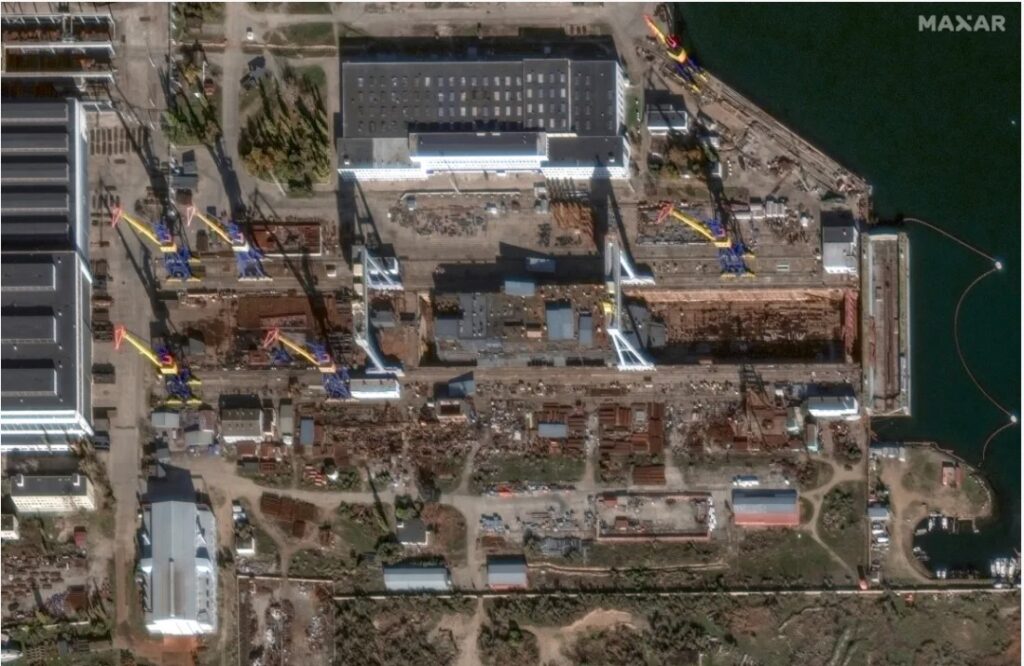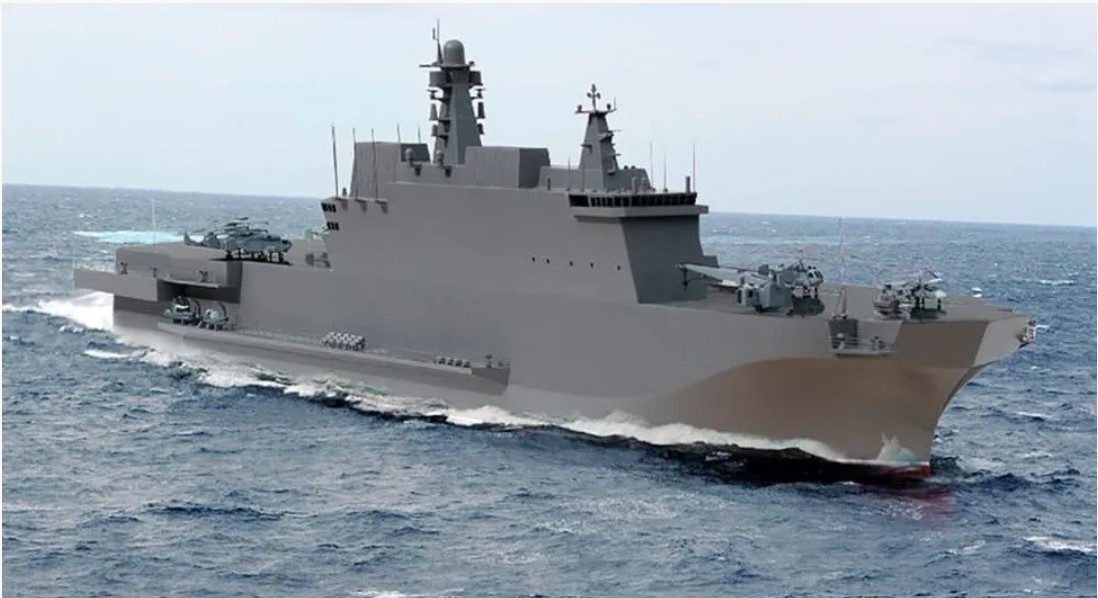Recent satellite imagery confirms that Russia is moving forward with constructing its first Project 23900 big-deck amphibious assault ship—known as the Ivan Rogov class—at the Zaliv shipyard in Kerch, located in occupied Crimea. Despite the ongoing war in Ukraine and past Ukrainian strikes on the facility, the images reveal significant progress on the vessel, according to The War Zone.
Ukrainian defense outlet Defense Express first highlighted the construction progress recently, publishing a satellite image reportedly taken in "spring 2025." TWZ subsequently obtained another image from Maxar Technologies captured on 17 November 2024, further documenting the project's advancement.
"The hull is dramatically more complete than it was in 2023 or even by the middle of the following year," notes TWZ Deputy Editor Joseph Trevithick. "Two large rectangular gaps are now visible, which could be for elevators to move aircraft and other materiel between the flight deck and below-deck hangars."
Moscow builds sea power platform
According to Defense Express, the vessel measures approximately 722 feet (220 meters) long and 131 feet (40 meters) wide. This aligns with specifications reported by Russia's state-run TASS in 2021, which stated the Ivan Rogov class would have a draft of nearly 23 feet (seven meters) and reach speeds up to 24 knots.

The amphibious assault ship represents a significant capability expansion for the Russian Navy. Previous reports indicate it could potentially carry:
- Up to 16 helicopters
- Six landing craft
- 75 vehicles
- 900 troops
- Additional materiel for amphibious operations.
"Ultimately, an amphibious assault ship is potentially much more flexible, even without conventional fixed-wing airpower," Trevithick explains. "With some modifications or a tailored air group onboard, these warships could also take on anti-submarine or mine warfare roles."
Delays deepen as threats intensify
The Project 23900 program directly stems from Russia's failed acquisition of two French Mistral class amphibious assault ships. That deal was canceled after Russia's 2014 annexation of Crimea, with the vessels ultimately sold to Egypt.
Notably, the Zaliv shipyard remains vulnerable to Ukrainian attacks. In November 2023, a Ukrainian cruise missile strike severely damaged the Russian Navy's Project 22800 Karakurt class corvette Askold at the same facility.
"It is somewhat curious that Ukrainians have not targeted the incomplete Ivan Rogov class ship already," Trevithick observes. "One factor could be that there is greater demand for the resources required to strike a vessel that still looks to be far away from being put in the water, let alone entering operational service any time soon."
The first Ivan Rogov class ship is not expected to be completed until 2027, two years later than initially planned. US and international sanctions on Russia's defense and shipbuilding industries—including specific sanctions on the Zaliv shipyard by both the US government and the European Union—may further complicate the timeline.
"What is clear is that work on the first Ivan Rogov class amphibious assault ship is still underway in Russian-occupied Crimea, despite the potential risks and other issues," Trevithick concludes.





